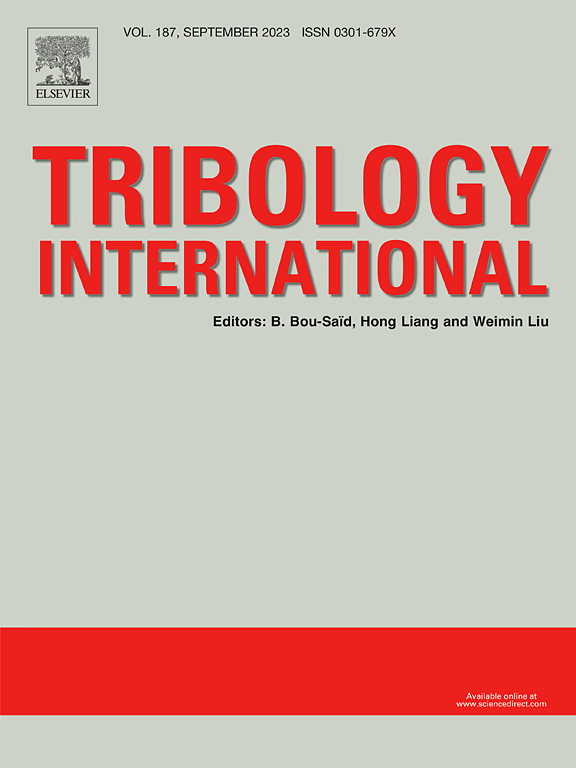Tribological behaviour of DIN 1.2740 hot working tool steel during mandrel mill stretching process
IF 6.1
1区 工程技术
Q1 ENGINEERING, MECHANICAL
引用次数: 0
Abstract
This study evaluates the tribological properties of DIN 1.2740 hot tool steel against Super Cr13 martensitic stainless steel at 700 °C. The results show that the coefficient of friction (COF) ranged from 0.15 to 0.63, indicating moderate frictional interaction. The wear rate of DIN 1.2740 was observed to be low, suggesting good resistance to wear at high temperatures. The complex surface oxide layer that formed on the pin’s top surface, significantly reducing the COF and acting as a solid lubricant at elevated temperatures. The oxide layer was also fragile and unable to withstand the high sliding velocities and high loads. The steel exhibited a high surface roughness when subjected to increasing normal loads and increasing sliding velocities.
DIN 1.2740 热加工工具钢在芯轴轧机拉伸过程中的摩擦学特性
本研究评估了 DIN 1.2740 热工具钢与超级 Cr13 马氏体不锈钢在 700 °C 下的摩擦学特性。结果表明,摩擦系数(COF)在 0.15 至 0.63 之间,表明摩擦作用适中。DIN 1.2740 的磨损率较低,表明在高温下具有良好的耐磨性。销顶表面形成了复杂的表面氧化层,大大降低了 COF 值,并在高温下起到了固体润滑剂的作用。氧化层也很脆弱,无法承受高滑动速度和高负载。在承受越来越大的法向载荷和越来越高的滑动速度时,钢的表面粗糙度很高。
本文章由计算机程序翻译,如有差异,请以英文原文为准。
求助全文
约1分钟内获得全文
求助全文
来源期刊

Tribology International
工程技术-工程:机械
CiteScore
10.10
自引率
16.10%
发文量
627
审稿时长
35 days
期刊介绍:
Tribology is the science of rubbing surfaces and contributes to every facet of our everyday life, from live cell friction to engine lubrication and seismology. As such tribology is truly multidisciplinary and this extraordinary breadth of scientific interest is reflected in the scope of Tribology International.
Tribology International seeks to publish original research papers of the highest scientific quality to provide an archival resource for scientists from all backgrounds. Written contributions are invited reporting experimental and modelling studies both in established areas of tribology and emerging fields. Scientific topics include the physics or chemistry of tribo-surfaces, bio-tribology, surface engineering and materials, contact mechanics, nano-tribology, lubricants and hydrodynamic lubrication.
 求助内容:
求助内容: 应助结果提醒方式:
应助结果提醒方式:


